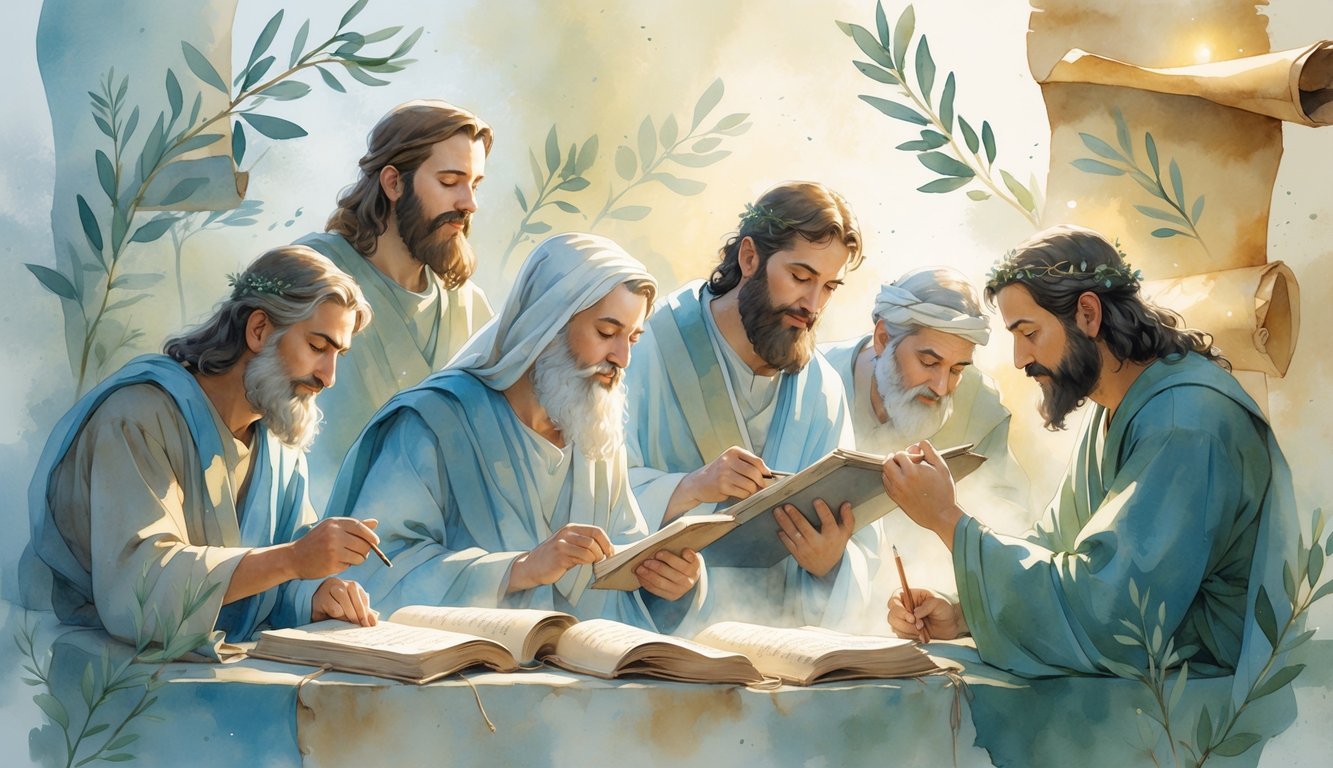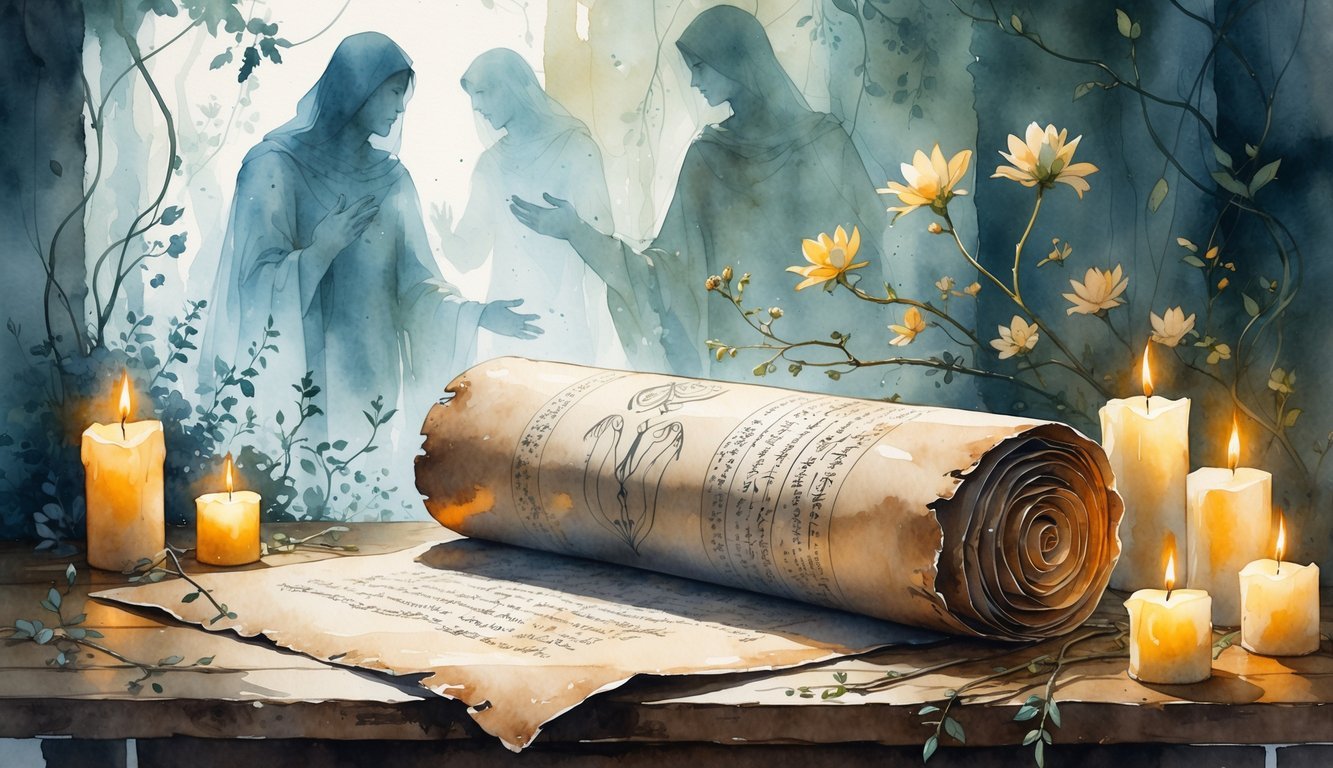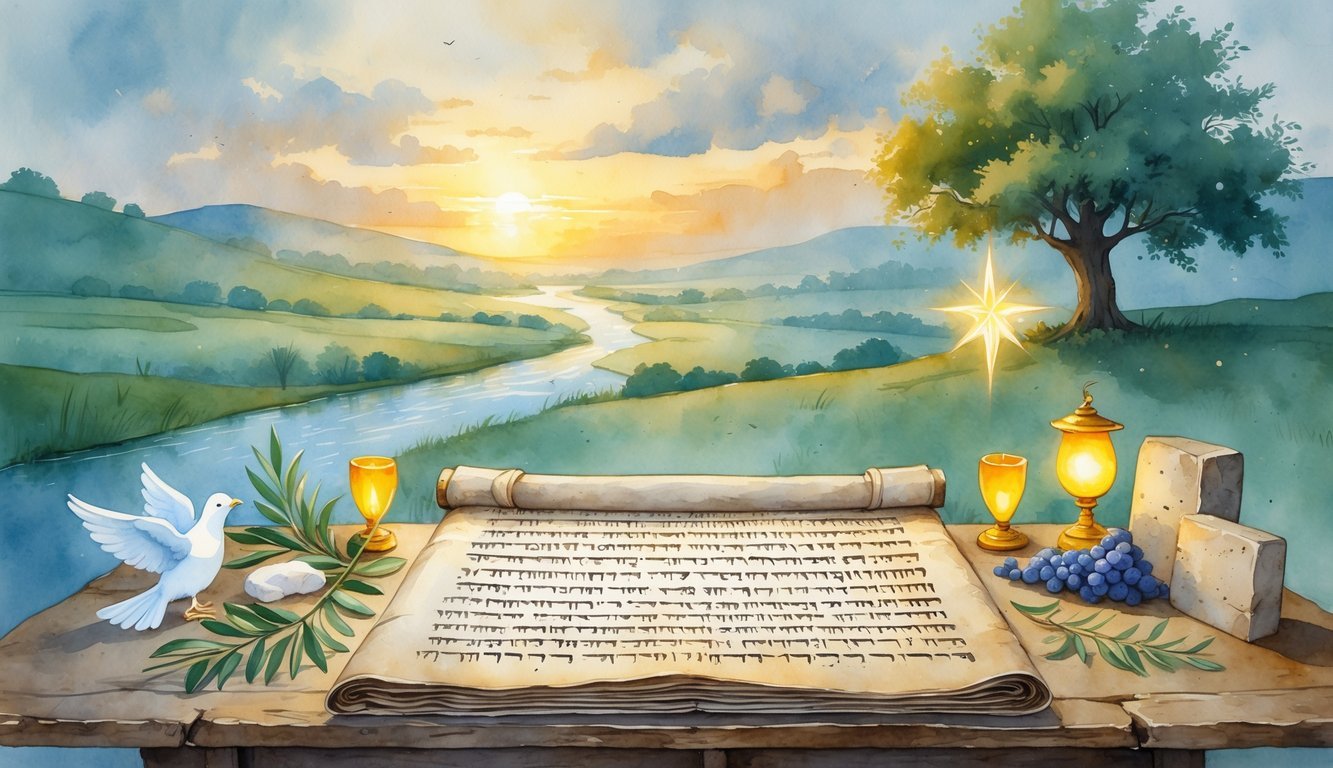PsychNewsDaily Publishers
100 Summit Drive
Burlington, MA, 01803
Telephone: (320) 349-2484
PsychNewsDaily Publishers
100 Summit Drive
Burlington, MA, 01803
Telephone: (320) 349-2484
The Bible contains hidden meanings within names, numbers, parables, colors, and historical references that deepen understanding and enhance spiritual insight for readers.

The Bible packs its stories and lessons with more than meets the eye. On the surface, things seem simple, but if you dig a bit deeper, you’ll spot plenty of hidden meanings that most people overlook.
These deeper layers can totally change how you see scripture. Suddenly, familiar verses feel fresh and loaded with new insight.
Honestly, you might be surprised by how much you’ve missed just by skimming. When you start noticing symbols, names, and ideas lurking below the surface, reading the Bible gets a lot more interesting.

Take a close look at the names in Genesis 5. You’ll find that each name means something, and when you string them together, a hidden message appears.
It’s like a quiet prayer about sorrow and hope—ending with God promising to help. Even a boring list can hold something pretty deep about God’s plan.

Numbers in the Bible aren’t just for counting—they often signal big prophetic moments. You’ll spot them marking timelines, promises, or warnings.
The number 40 pops up a lot, like with the flood or Jesus fasting. It’s usually about testing or transformation. Try noticing how these numbers tie into the bigger picture.

When you read Jesus’ parables, they might seem like simple stories at first glance. But honestly, they pack a punch with deeper spiritual lessons.
Take the Parable of the Hidden Treasure—it’s not just about luck, but about giving up everything for truth. Parables use everyday stuff to help you understand God’s kingdom and how it fits your life.
You’ll discover things like forgiveness, faith, and the value of love tucked inside these stories. They really get you thinking.

Colors in the Bible actually have a lot to say. Purple usually points to royalty or holiness.
White stands for purity—kind of like a fresh start in God’s eyes.
Red often means sacrifice or sin, which is a pretty big deal spiritually.
Gold? That’s all about God’s glory or something precious. Next time you see a color mentioned, maybe pause and wonder what it’s really hinting at.

Animals in the Bible aren’t just background characters. They help you picture ideas or lessons in a new way.
Lions often stand for strength or courage.
Doves show up as symbols of peace or hope.
Snakes? They’re usually a warning about danger or trickery. When you notice these animals, you start to catch the deeper messages hiding in the stories.

It’s easy to skip over the Bible’s lesser-known characters, but they’ve got some real gems. These people might not get much attention, but their quiet faith and simple courage can teach you a lot.
Even short stories about them show you how trust, patience, and kindness matter.
If you take time to notice these hidden figures, you’ll find lessons that actually help in your own life.

Some Bible passages sneak in references to real historical events. They hide these hints in symbols or quick phrases.
If you dig a little, you’ll spot connections to old battles, kingdoms, or famous leaders. It’s pretty wild how the Bible weaves history and faith together.

Some Psalms, like Psalm 130, actually hide messages in the original Hebrew. If you slow down and study the patterns or codes, you’ll find extra layers of meaning and comfort.
It’s not always obvious, but those encrypted lines can make the Psalms feel even more personal.

Names in Genesis are never just names. They reveal something about the person or what’s coming next.
When you check out the meanings, you’ll spot hidden messages about people and even whole nations.
It’s kind of amazing how each name fits into the bigger story God’s telling.

There are so many prophecies in the Bible that haven’t happened yet. Some are tucked away in symbols or codes, so they’re easy to skip over.
These prophecies don’t just talk about the past—they hint at what’s coming next. If you pay attention, you’ll feel more prepared for whatever the future holds.

Biblical symbolism takes ordinary things and loads them with spiritual meaning. You’ll see animals, colors, numbers, and objects used as symbols all the time.
If you know what these stand for, you can unlock layers of meaning you might have missed.
You’ll usually find three main types of symbols in the Bible:
Other stuff, like an olive branch, means peace. When you spot these, you get a better sense of what the writers wanted to say.
Understanding symbols can totally change how you read the Bible. You stop seeing just the surface and start catching messages about faith, hope, and God’s plan.
These hidden meanings can actually help guide your decisions. They also make old stories feel personal, even today.
When you get the symbolism, reading scripture just feels more alive.

If you want to catch the real message in the Bible, you’ve got to know the background and language. Where and when writers put the words down, and how they used certain phrases, can reveal stuff you’d otherwise miss.
The Bible came together over centuries and in all kinds of places. Each story or teaching reflects its own corner of the world.
Some laws and customs might seem odd now, but they made sense back then.
When you read about what people did or what happened, try to picture their world. Social rules, festivals, and daily routines all shaped what the Bible says.
Learning about the culture behind the text helps you see why certain ideas mattered so much. It also lets you spot connections across the Bible that you might’ve missed otherwise.
The Bible came together mostly in Hebrew, Aramaic, and Greek. Each of these languages has words and phrases that just don’t have a perfect match in English.
So, some meanings slip through the cracks or shift a bit. Translators work hard to keep things accurate but also readable, which isn’t always simple.
Sometimes, a single word in the original language can mean several different things. That’s why you’ll spot different Bible versions using different words for the same verse.
It helps to compare translations or check out study notes if you want a bigger picture. Some words also carry cultural or symbolic weight that really only makes sense if you know the original language.
If you pay attention to language and translation, you might notice deeper insights hiding in the wording. It’s honestly a great way to get more out of your reading.